Step Inside Winter’s Most Spectacular Wonderland at the Harbin Ice and Snow Festival in Northeast China
Visitors brave -40 degree temperatures to climb glistening ice castles and frozen replicas of iconic buildings
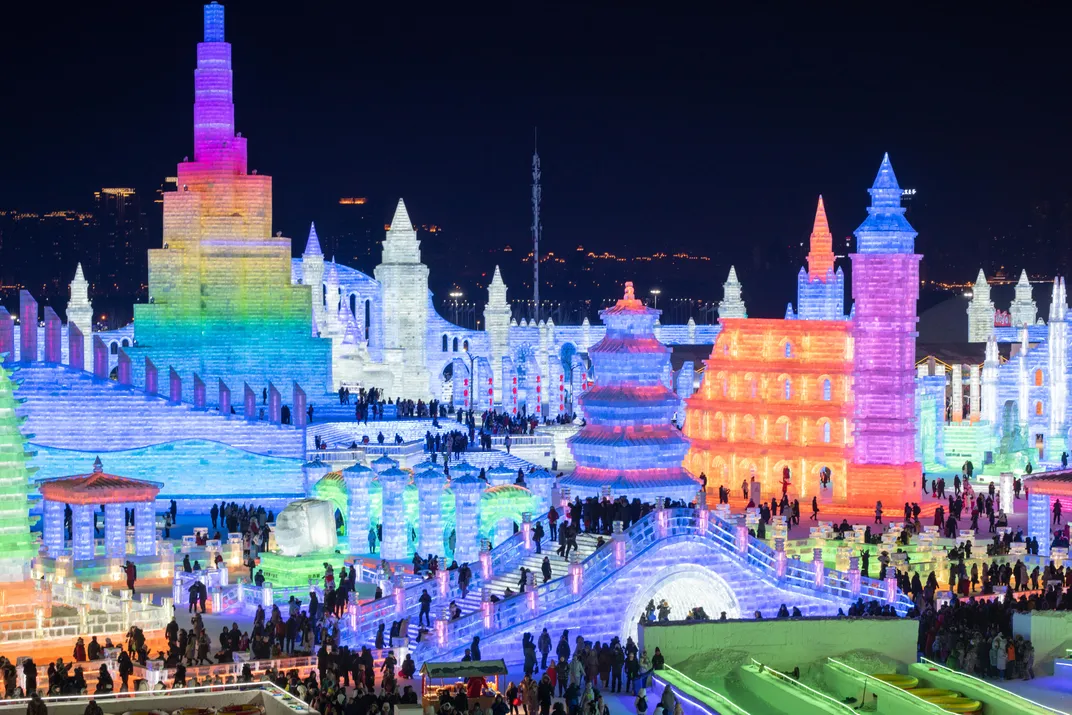
Every winter, millions of tourists flock to Harbin — a city in the northeast corner of China—to stand in temperatures nearing -40 degrees Fahrenheit and look at giant blocks of ice. Of course, it helps when those ice blocks are skillfully arranged to create a replica of the Colosseum, lit from the inside by multi-colored incandescent lights to glow under the inky winter sky.
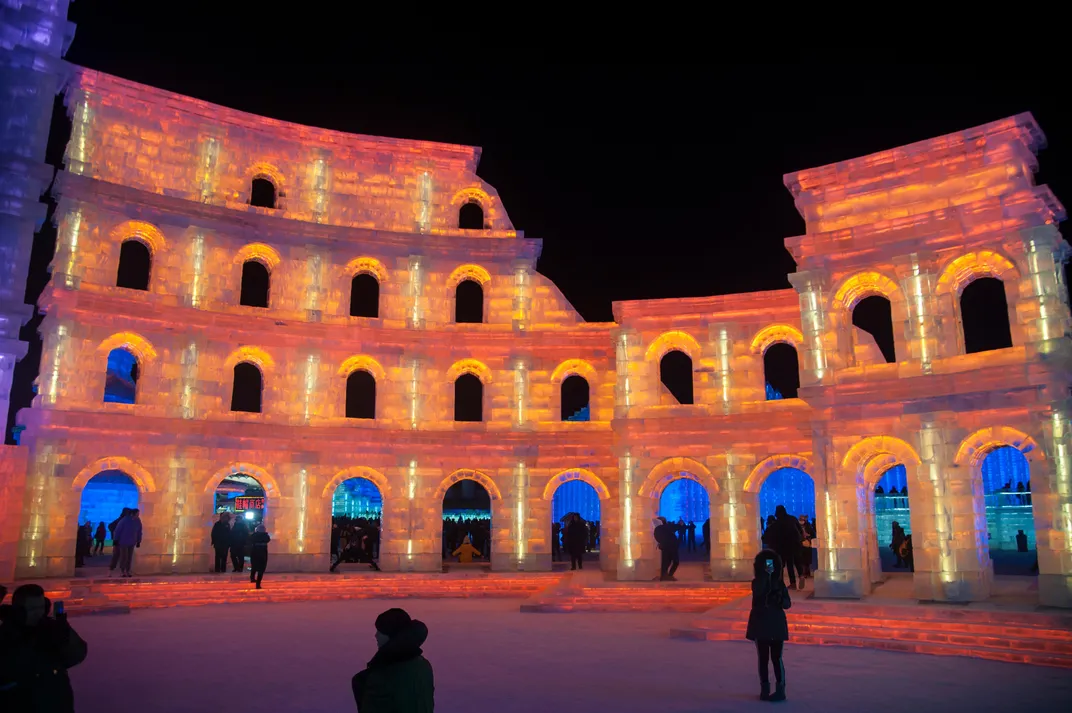
January 5 marked the beginning of the two-month-long 35th annual Harbin International Ice and Snow Festival, the largest snow and ice festival in the world. Spanning eight million square feet of the city, the multi-million dollar production features massive snow and ice sculptures that draw visitors from across the globe. Though the official modern-day festival began in 1985, an organized ice show began in 1963, and the event can trace its frigid artistry back to the early Qing dynasty when peasants and fishermen placed candles inside blocks of ice cut from the Songhua River to create makeshift lanterns.
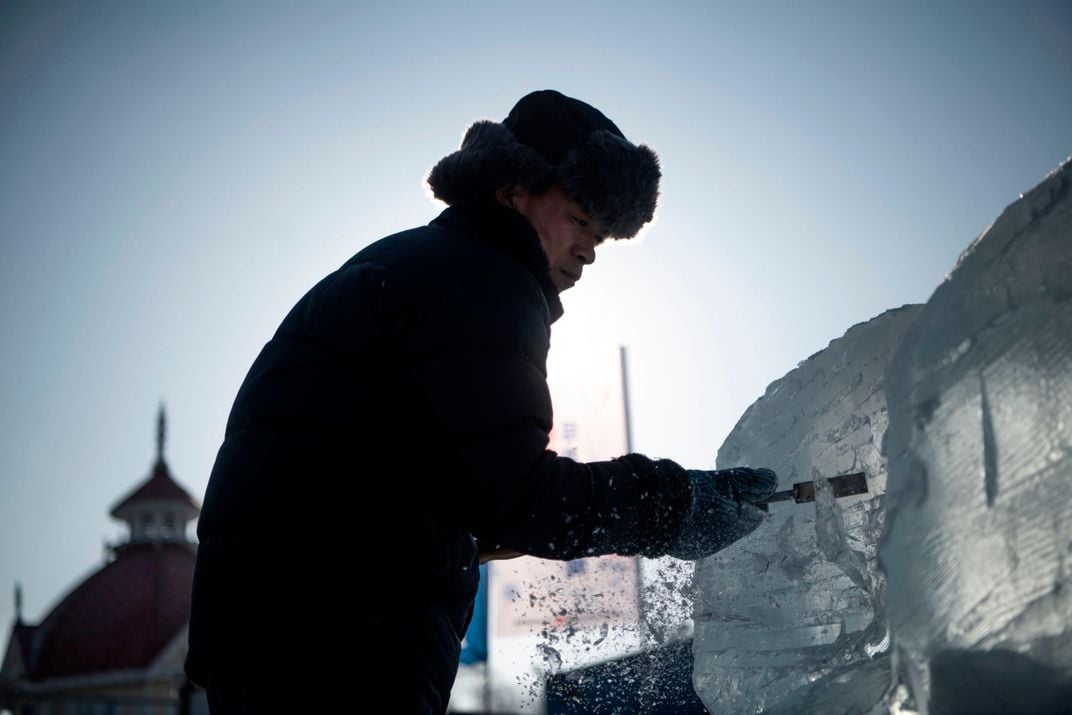
Nearly 400 years later, the Songhua still serves as the lifeblood of the festival. Thousands of workers spend the days leading up to the festival cutting blocks of ice, two to three feet thick, to provide the nearly four million cubic feet of frozen building material needed to build the Ice and Snow World.
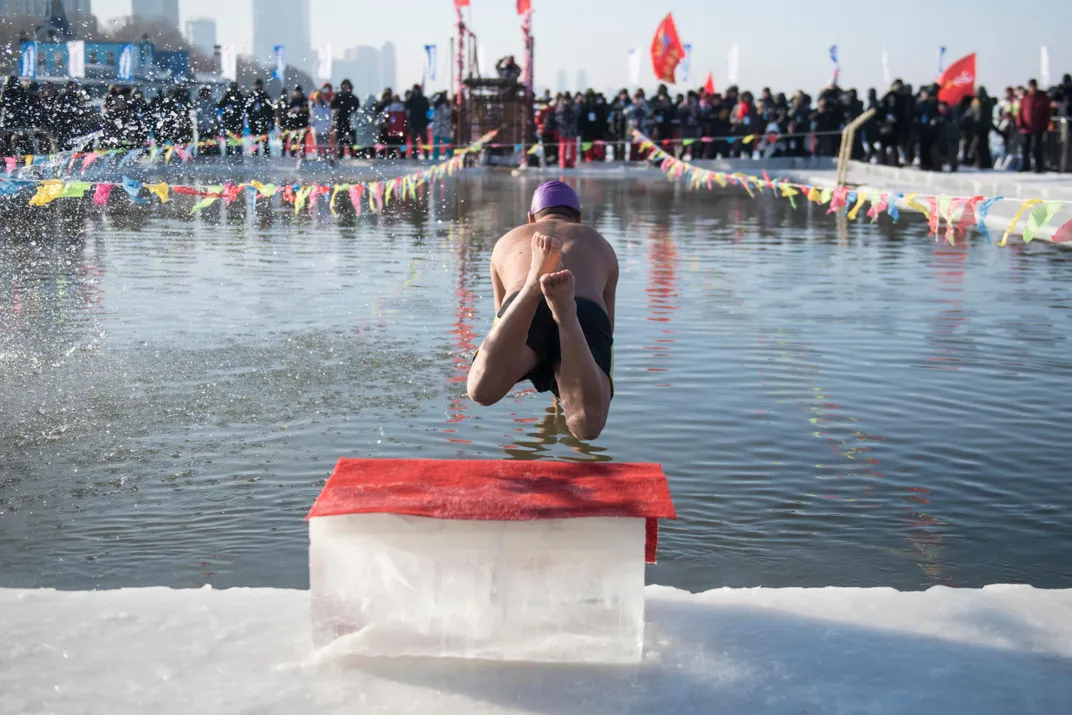
In a pool next to the Songhua, a polar plunge is held every day. Polar swimming is popular in China’s northeast and is said to improve circulation and mental acuity. This plunge is only for the bravest or most masochistic health nuts, as the air temperatures rarely break sub-zero.
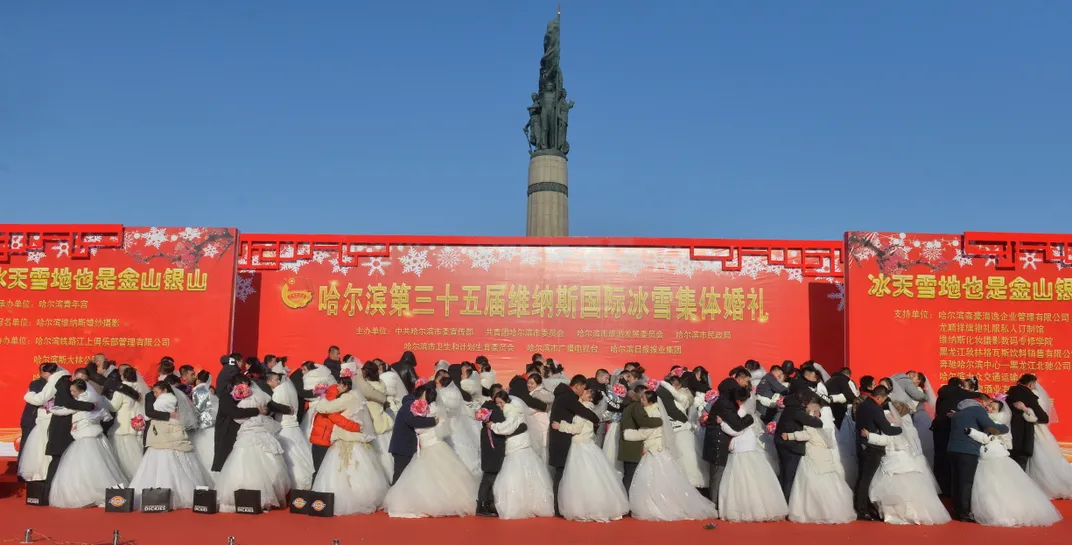
For those looking for a unique place to tie the knot, the festival has a mass wedding every year with dozens of couples attending. Though many of the lovebirds are from Harbin, the ceremony draws couples from around the world, many of whom use the standout experience of getting hitched in freezing temperatures as a second ceremony. Donning fur coats and parkas over their dresses and suits, the couples pose for pictures after exchanging rings, then collectively cut a massive frozen wedding cake.
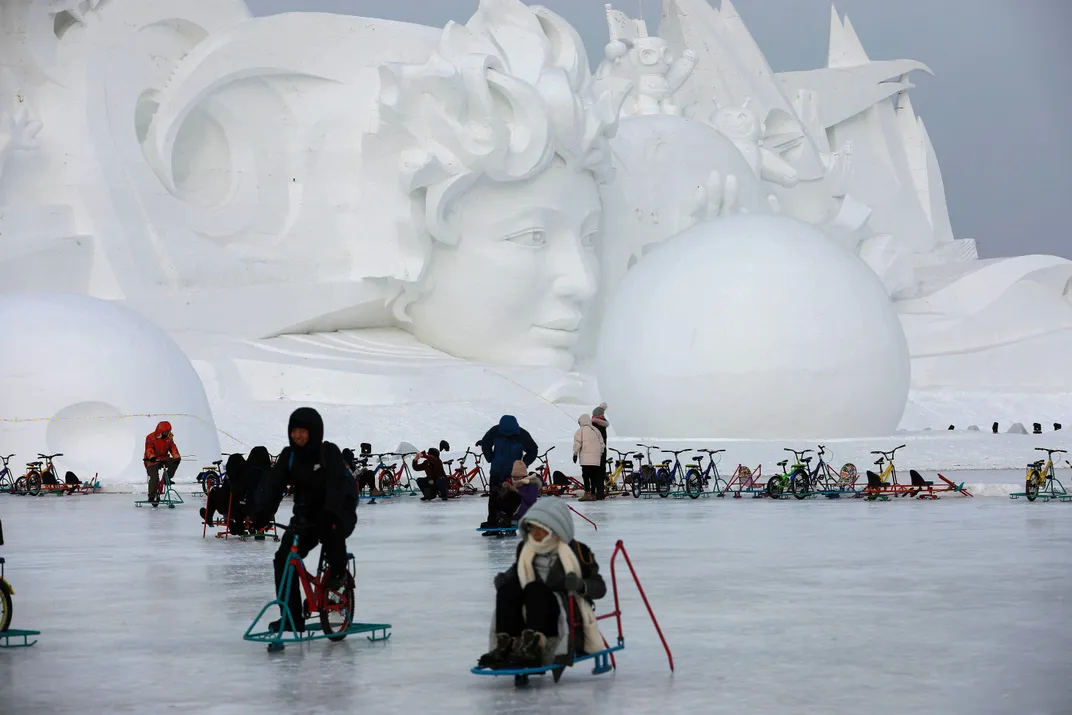
The real attractions are the festival's frosty artistic productions. The snow carving competition is held on Harbin’s Sun Island, where teams from around the world sculpt highly detailed creations out of hard packed snow. On top of the ice pulled from the river, four million cubic feet of snow are carefully carved with saws, shovels, augers and sandpaper to create super-sized human faces, animals, palaces and an army of giant snowmen.

When the sun goes down, Harbin begins to shine in earnest. The Ice and Snow World looks like a shining city of glass, but it’s all constructed out of bricks of frozen water. Rome may not have been built in a day, but the Harbin version of its Colosseum nearly was. Through the efforts of over 7,000 workers, the 64,000-square-foot city is constructed in roughly two weeks. Described as an “icy Disneyland,” the attraction is filled with frozen architectural feats, resplendent with castles, replicas of iconic buildings and even a few giant ice slides for visitors to enjoy.
This year, more than 10 million visitors are expected to attend the festival, which runs through February 5.
(Top image: Glowing ice sculptures span eight million square feet of Harbin, a city in China's northeastern Heilongjiang province. [VCG / Getty Images])
Planning Your Next Trip?
Explore great travel deals
Smithsonian magazine participates in affiliate link advertising programs. If you purchase an item through these links, we receive a commission.
/https://tf-cmsv2-smithsonianmag-media.s3.amazonaws.com/accounts/headshot/jane.png)
/https://tf-cmsv2-smithsonianmag-media.s3.amazonaws.com/accounts/headshot/jane.png)